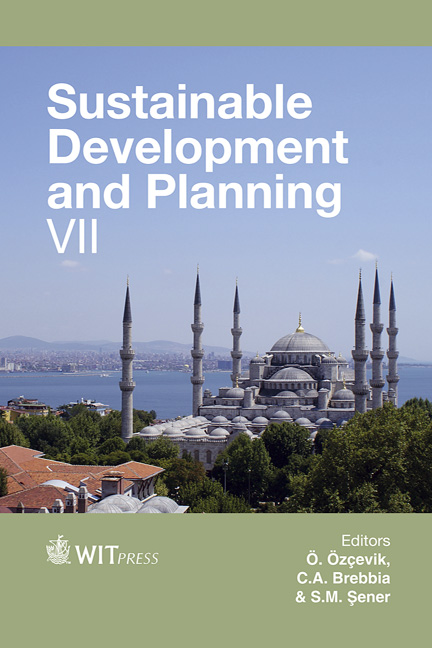Accessibility Patterns Of Istanbul’s Hans Region As A Traditional Urban Trade District
Price
Free (open access)
Transaction
Volume
193
Pages
11
Page Range
227 - 237
Published
2015
Size
2,903 kb
Paper DOI
10.2495/SDP150191
Copyright
WIT Press
Author(s)
M. Ozkan Ozbek
Abstract
This study aims to understand the determining factors on pedestrian flow based on sustainable urban patterns related to factors such as spatial configuration, attraction of opportunities, and topological issues (slope of the land) that affect traditional accessibility measures. In this context the space syntax theory and other morphological techniques present some measures that could aid improvement of the environmental quality of pedestrian accessibility as well as helping to understand the retail dynamics of Hans region.
The space syntax configurations are used here to make several important observations configurationally ones obtained through the axial map, land use effects and the pedestrian flow, slope degrees where the trade areas are more in demand, pieces of land where natural movement occurs in highly integrated zones.
Ten important trade axes are chosen where Han buildings are densely settled for spatial configurations since that area was found to be a highly integrated district in all historical peninsula’s global integration analysis. Land use analyses have been conducted to understand the diversity of human activities. Second, weekday and weekend pedestrian counts have been recorded including children, teenage, young and old people without considering gender difference. Terrain slope is also an important factor for Hans region therefore slope measures have been calculated of these streets. Correlation analysis of pedestrian counts and the local integration values have been done to understand the relationship between them. The outcomes of this study reveals the role of pedestrian movement in traditional trade areas and integration measures in the network are measured and presented graphically.
Keywords
accessibility, pedestrian flow, retail diversity, traditional settlements





